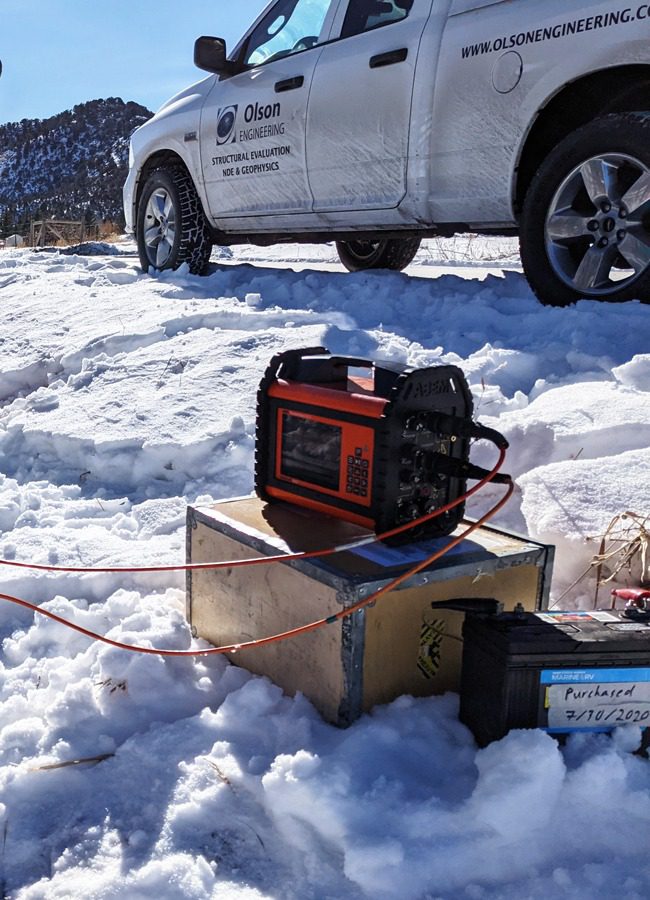Groundwater Geophysics
The ever-increasing need for groundwater has translated into using subsurface imaging to meet the demand. Generally, the methods applied to find groundwater are very similar to those used for natural resource exploration for mineral or petroleum products. However, new geophysical equipment specifically for shallow ground characterization is being developed constantly and we stay on the cutting edge of this development. Groundwater projects conducted by Olson are typically in the upper 1000 feet of the ground surface, and can largely be categorized in one of three settings:
- Unconfined aquifer investigations in shallow unconsolidated alluvial deposits where saturated porous-media flow is the target.
- Confined aquifer investigations in which the target is characterizing the geometry of the aquifer and aquitard layers.
- Confined groundwater investigations targeting secondary flow pathways caused by faults, fracture systems (or a combination), or karst, all of which are based on the geologic structure beneath the site.
Each of these hydro-geologic settings have unique characteristics that require close collaboration with our clients to understand their need for yield and quality yet remain within the limits of the water-rights permitted to that site. The geologists and geophysicists at Olson Engineering have experience working in all three hydro-geologic scenarios, allowing us to design a geophysical survey to meet your objective.

Applications for Geophysical Groundwater Exploration
- Depth to bedrock / Thickness of alluvium
- Lithology for sand & gravel deposits versus clay layers
- Depth to water table (in saturated, course-grained soils)
- Lateral extent of alluvial deposits for infiltration galleries
- Presence of paleochannels, to identify where bedrock deepens abruptly
- Fault and its antithetic features (e.g., graben)
- Fractures in bedrock
- Depth to aquatard
- Depth to known aquifer formation(s)
- Difference of saline/brackish water versus fresh groundwater
- Saltwater intrusion in coastal aquifers
- Aquifer Storage Recharge (ASR) delineation

